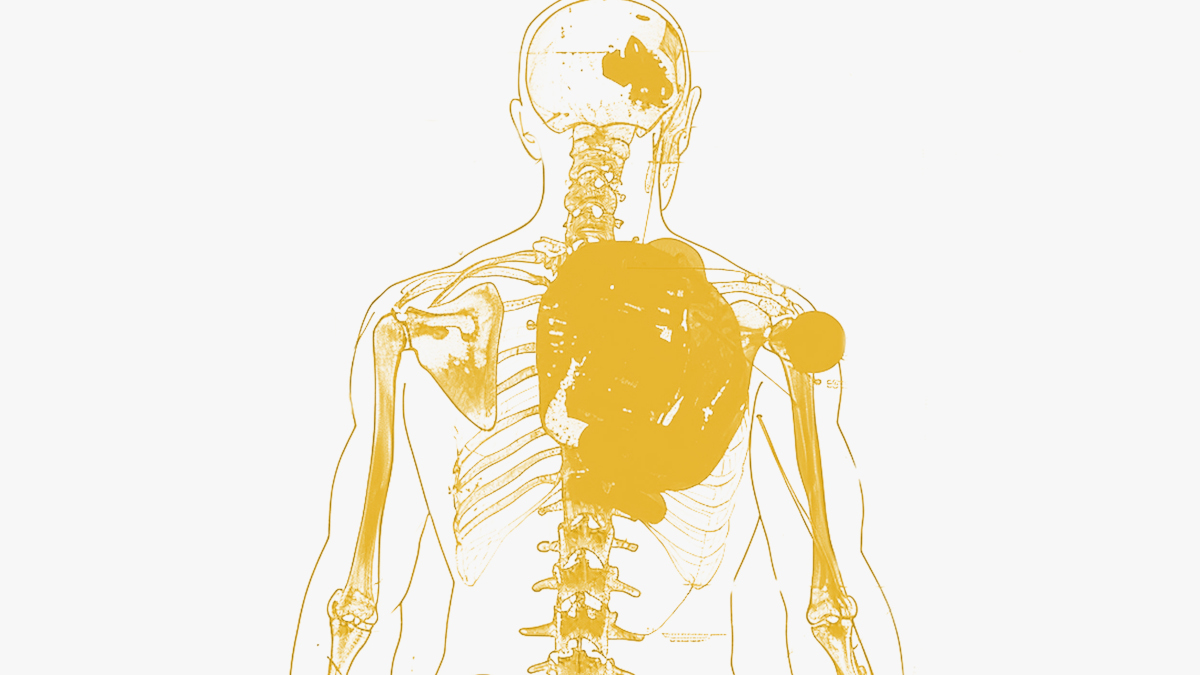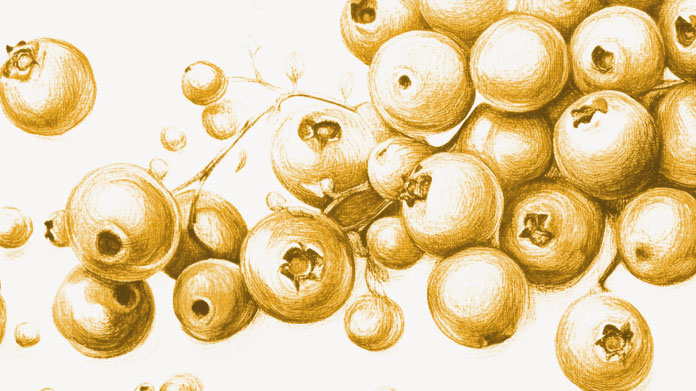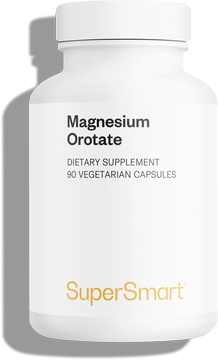7 natural remedies for inflammation
While inflammation can be good for our health, it definitely isn’t when It becomes chronic. Here are 7 natural tips to eliminate it.

Inflammation: what’s the problem?
The inflammatory process is part of the body’s normal response to attack (viruses, bacteria, allergens, injuries, or insect bites, for example). It is a first-line defense mechanism vital for identifying tissue damage and/or eradicating pathogens.
In its acute phase, inflammation manifests in dilation of the blood vessels which allows an influx of immune cells (primarily neutrophils and macrophages) to the affected site where, in a process called phagocytosis, they digest damaged tissue, germs or antigens.
Short-term inflammation encourages healing but when it persists, it becomes problematic: this is referred to as chronic inflammation. With constant demands being made on the immune system, it becomes weaker and more vulnerable to disease. This ‘silent’ inflammation is indeed a factor in most long-term diseases such as diabetes, cardiovascular disease and auto-immune disorders (1-3).
A good way of identifying inflammation levels is to test the blood for C-reactive protein (CRP). Produced by the liver, this is an early and specific marker of an acute or chronic inflammatory response. Normal CRP levels are below 6 mg/L.
Get active to reduce inflammation levels
When you move around, your muscle cells release two mediators that naturally reduce inflammation levels: interleukin-6 (IL-6) and interleukin-10 (IL-10) (4). This effect is even greater in the case of prolonged physical activity. An excellent reason to put on your trainers (or head for the pool)!
Lose weight to reduce pro-inflammatory molecules
Not only does exercise offer immediate benefits, it’s also an important aid to losing weight. Adipose cells are thought to exert a pro-inflammatory effect on macrophages, large numbers of which accumulate in fatty tissue (5). So by shedding a few pounds, you’re likely to reduce your inflammation levels too.
Take advantage of antioxidants such as turmeric
A key tool in our armoury, antioxidants play a central role in maintaining inner balance. To gain maximum benefit from them, make sure you consume them regularly.
A star performer from Ayurvedic medicine, turmeric offers extraordinary antioxidant properties largely due to its content of curcuminoids (6). Unfortunately, these compounds are poorly absorbed by the body in their natural state, but cutting-edge supplements have managed to remedy this by combining turmeric with natural phosphatidylcholine (as in the product Super Curcuma, where the curcuminoids are 29 times more absorbable compared with standard supplements).
Given the complexity of the biochemical reactions that control the body, you could also diversify your intake of ‘supermolecules’, by choosing a synergistic formulation (combining turmeric with 12 exceptional substances including tulsi, bromelain, gingerols, quercetin and rutin, the supplement Inflarelief is the benchmark in this field) (7-9).
Adopt an anti-inflammatory diet
On top of increasing your antioxidant intake, reviewing your dietary habits as a whole is another way of lowering your CRP level.
The emphasis should, of course, be on fruits and vegetables, but don’t forget about pulses: as a source of fiber and plant proteins, they, along with wholegrains, provide a good alternative to meat which actually maintains inflammatory states (10). They also have a low glycaemic index, a key priority in fighting inflammation. So high-sugar foods are off the menu! (11)
Typically, our diet also has a a poor omega 6:omega 3 ratio. Though omega-6 fatty acids are essential, they exert a pro-inflammatory effect if consumed in excess. It’s a good idea, then, to redress the balance by boosting your omega-3 intake (with, in particular, oily fish, and linseed, rapeseed or hemp oil) (12).
With regard to ‘healthy fats’, palmitoleic acid (or omega-7), which is abundant in body tissues but negligible in the diet, is currently attracting considerable scientific interest (13). It may therefore be appropriate to supplement with this invaluable amino acid (by taking, for example, Palmitoleic Acid, a purified palmitoleic acid supplement, obtained from sustainably-fished anchovies).
Boost your intake of red berries
How about injecting some brightness into your diet with a bowl of berries? Despite their small size, they pack a hefty punch in terms of health benefits, because of their high content of exceptional compounds (14). Leading the pack are bilberries and grapes, both of which have antioxidant properties that come from their anthocyanin and leucocyanidin content (15-16).
If berries are something you rarely buy, think about supplementing with extracts of red berries and fruits to restore your inner balance (with a product such as AntiOxidant Synergy, based on turmeric, bilberry and grapeseed, and enriched with powerful natural substances including green tea, resveratrol, glutathione and pine bark).
Combat stress to maintain low CRP levels
No fewer than 41 studies published between 2003 and 2013 refer to a link between psychosocial stress and raised CRP levels (17). So taking time for yourself, engaging in relaxing activities, and managing your emotions better could all have a positive effect in reducing chronic inflammation (and better still, preventing it!)
Try boswellia for joint inflammation
Are your knees and hips now a painful reminder of good times in your past? A resin obtained from the bark of the tree Boswellia serrata, Boswellia supports joint health as a result of its high content of boswellic acid (18-19). Taken in the form of a dietary supplement (for example,5-Loxin®, standardized to 30% boswellic acid for optimal efficacy), it offers valuable support for inflamed joints.
And one last ingredient to discover is white willow bark, often recommended by naturopaths for its salicin content, which is converted into salicylic acid in the body.
References
- Tsalamandris S, Antonopoulos AS, Oikonomou E, et al. The Role of Inflammation in Diabetes: Current Concepts and Future Perspectives. Eur Cardiol. 2019;14(1):50-59. doi:10.15420/ecr.2018.33.1
- Sorriento D, Iaccarino G. Inflammation and Cardiovascular Diseases: The Most Recent Findings. Int J Mol Sci. 2019;20(16):3879. Published 2019 Aug 9. doi:10.3390/ijms20163879
- Duan L, Rao X, Sigdel KR. Regulation of Inflammation in Autoimmune Disease. J Immunol Res. 2019;2019:7403796. Published 2019 Feb 28. doi:10.1155/2019/7403796
- Ertek S, Cicero A. Impact of physical activity on inflammation: effects on cardiovascular disease risk and other inflammatory conditions. Arch Med Sci. 2012;8(5):794-804. doi:10.5114/aoms.2012.31614
- Bianchi VE. Weight loss is a critical factor to reduce inflammation. Clin Nutr ESPEN. 2018 Dec;28:21-35. doi: 10.1016/j.clnesp.2018.08.007. Epub 2018 Sep 3. PMID: 30390883.
- Jurenka JS. Anti-inflammatory properties of curcumin, a major constituent of Curcuma longa: a review of preclinical and clinical research. Altern Med Rev. 2009 Jun;14(2):141-53. Erratum in: Altern Med Rev. 2009 Sep;14(3):277. PMID: 19594223.
- da Silva AB, Cerqueira Coelho PL, das Neves Oliveira M, Oliveira JL, Oliveira Amparo JA, da Silva KC, Soares JRP, Pitanga BPS, Dos Santos Souza C, de Faria Lopes GP, da Silva VDA, de Fátima Dias Costa M, Junier MP, Chneiweiss H, Moura-Neto V, Costa SL. The flavonoid rutin and its aglycone quercetin modulate the microglia inflammatory profile improving antiglioma activity. Brain Behav Immun. 2020 Mar;85:170-185. doi: 10.1016/j.bbi.2019.05.003. Epub 2019 May 3. PMID: 31059805.
- de Sá Coutinho D, Pacheco MT, Frozza RL, Bernardi A. Anti-Inflammatory Effects of Resveratrol: Mechanistic Insights. Int J Mol Sci. 2018;19(6):1812. Published 2018 Jun 20. doi:10.3390/ijms19061812
- Rathnavelu V, Alitheen NB, Sohila S, Kanagesan S, Ramesh R. Potential role of bromelain in clinical and therapeutic applications. Biomed Rep. 2016;5(3):283-288. doi:10.3892/br.2016.720
- Ley SH, Sun Q, Willett WC, Eliassen AH, Wu K, Pan A, Grodstein F, Hu FB. Associations between red meat intake and biomarkers of inflammation and glucose metabolism in women. Am J Clin Nutr. 2014 Feb;99(2):352-60. doi: 10.3945/ajcn.113.075663. Epub 2013 Nov 27. PMID: 24284436; PMCID: PMC3893727.
- Fajstova A, Galanova N, Coufal S, et al. Diet Rich in Simple Sugars Promotes Pro-Inflammatory Response via Gut Microbiota Alteration and TLR4 Signaling. 2020;9(12):2701. Published 2020 Dec 16. doi:10.3390/cells9122701
- Calder PC. Omega-3 fatty acids and inflammatory processes: from molecules to man. Biochem Soc Trans. 2017 Oct 15;45(5):1105-1115. doi: 10.1042/BST20160474. Epub 2017 Sep 12. PMID: 28900017.
- de Souza CO, Valenzuela CA, Baker EJ, Miles EA, Rosa Neto JC, Calder PC. Palmitoleic Acid has Stronger Anti-Inflammatory Potential in Human Endothelial Cells Compared to Oleic and Palmitic Acids. Mol Nutr Food Res. 2018 Oct;62(20):e1800322. doi: 10.1002/mnfr.201800322. Epub 2018 Aug 28. PMID: 30102465.
- Joseph SV, Edirisinghe I, Burton-Freeman BM. Berries: anti-inflammatory effects in humans. J Agric Food Chem. 2014 May 7;62(18):3886-903. doi: 10.1021/jf4044056. Epub 2014 Mar 17. PMID: 24512603.
- Ghalishourani SS, Farzollahpour F, Shirinbakhshmasoleh M, Kolahdouz S, Ghaedi E, Behrouzian M, Haghighian HK, Campbell MS, Asbaghi O, Moodi V. Effects of grape products on inflammation and oxidative stress: A systematic review and meta-analysis of randomized controlled trials. Phytother Res. 2021 Sep;35(9):4898-4912. doi: 10.1002/ptr.7120. Epub 2021 Apr 28. PMID: 33908079.
- Luo H, Lv XD, Wang GE, Li YF, Kurihara H, He RR. Anti-inflammatory effects of anthocyanins-rich extract from bilberry (Vaccinium myrtillus L.) on croton oil-induced ear edema and Propionibacterium acnes plus LPS-induced liver damage in mice. Int J Food Sci Nutr. 2014 Aug;65(5):594-601. doi: 10.3109/09637486.2014.886184. Epub 2014 Feb 19. PMID: 24548119.
- Johnson TV, Abbasi A, Master VA. Systematic review of the evidence of a relationship between chronic psychosocial stress and C-reactive protein. Mol Diagn Ther. 2013 Jun;17(3):147-64. doi: 10.1007/s40291-013-0026-7. PMID: 23615944.
- Siddiqui MZ. Boswellia serrata, a potential antiinflammatory agent: an overview. Indian J Pharm Sci. 2011;73(3):255-261. doi:10.4103/0250-474X.93507
- Yu G, Xiang W, Zhang T, Zeng L, Yang K, Li J. Effectiveness of Boswellia and Boswellia extract for osteoarthritis patients: a systematic review and meta-analysis. BMC Complement Med Ther. 2020;20(1):225. Published 2020 Jul 17. doi:10.1186/s12906-020-02985-6
Keywords
4 Days
A Product worth waiting for when not…
A Product worth waiting for when not available and then arriving as a surprise!
DOMINIC
6 Days
On time shipping
On time shipping
GEORGE Verne
8 Days
Ordering was easy and the product was…
Ordering was easy and the product was delivered with no problems. Appreciated that I was notified when it would arrive. Thanks!
MascarC
13 Days
Great customer service - responsive …
I ordered from them and my item was unavailable for sometime. I was super happy when they reactivated my order and shipped my item which arrived very quickly. Great customer service.
Ruth Rueter
14 Days
Super fast shipping
Super fast shipping
Donald Borling
17 Days
Reputable companysearch and the number of…
The research and the number of selection of products.
NAKHJAVAN Shervin
31 Days
The Anti Aromatase is a great product
The Anti Aromatase is a great product. You just need to have constant inventory. Recently this product has been out of stock.
GEORGE Verne
32 Days
Great help on chat
Great help on chat. Knowledgeable and friendly.
Jason Argos
36 Days
Customer service was fast and friendly.
Customer service helped to stop the transaction process of the subscription. I appreciated that.
Greenie
36 Days
I order here due to the high quality of…
I order here due to the high quality of the products and the quick delivery of items - thank you
Barbara J
37 Days
SuperSmart's Eye Pressure supplements: highly recommended!
I purchase SuperSmart's Eye Pressure supplements regularly for over 5 years, and gotta say they are truly a wonderful product for my Glaucoma. Highly recommended if you have eye pain from your Glaucoma.
D. Martinez
42 Days
Quick service
Quick service
MONELL
43 Days
Speedy service.
Speedy service.
ROSENTHAL Marvin
46 Days
Clear website- Efficient
Clear website. Excellent search engine and fast delivery!
Mohamad Hussein
49 Days
They have great products.
They have great products.
Vickie





